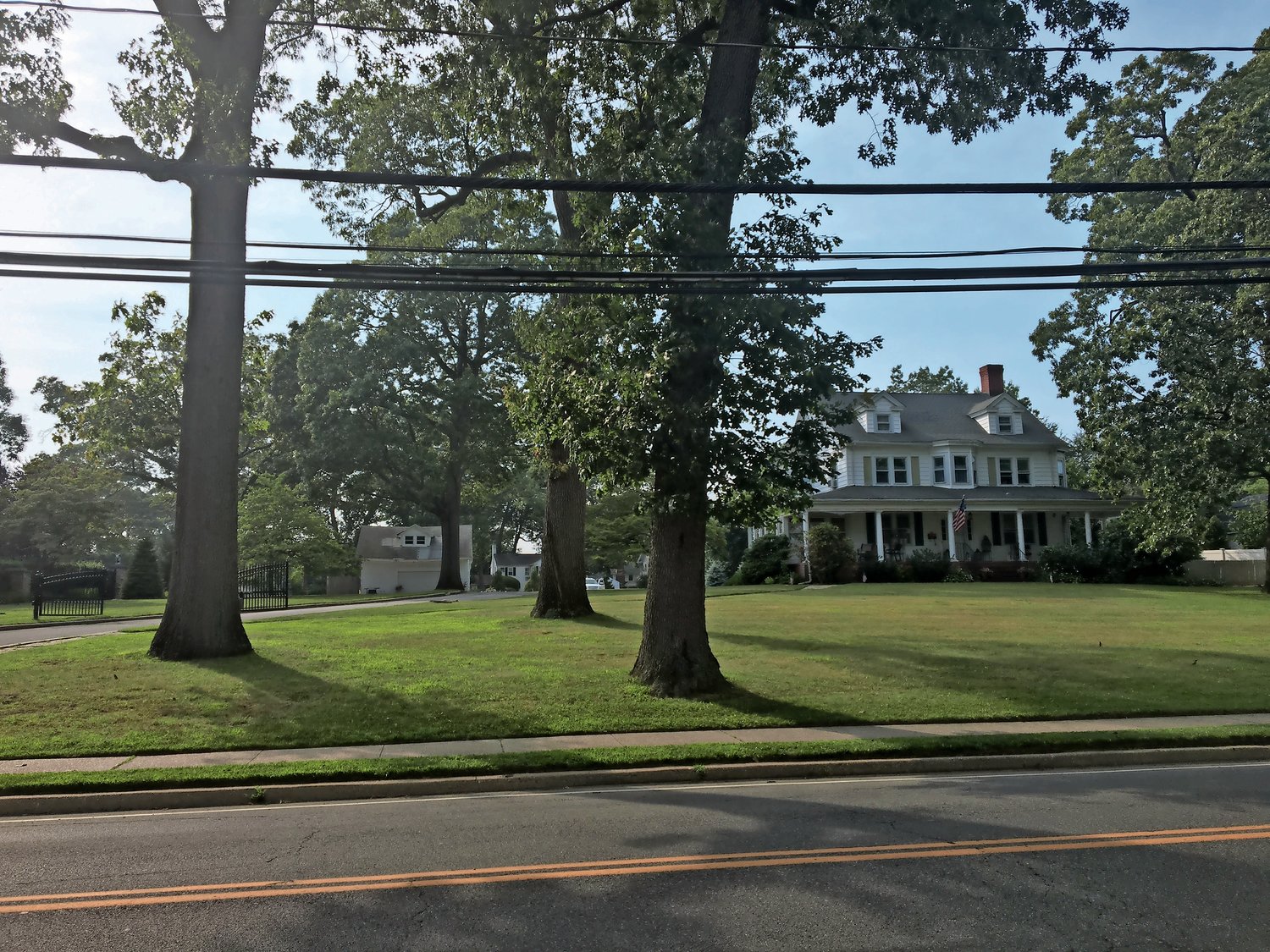Residents protest looming subdivision at 220 Hempstead Ave. ahead of Aug. 6 vote
A number of residents say they were dissatisfied with the Rockville Centre Planning Board’s announcement at a June 19 meeting that it would approve a subdivision at 220 Hempstead Ave. — a reversal of an earlier decision — after being ordered to do so by a Nassau County State Supreme Court judge.
J. Robert Mac-Anney, Liz Stack, Matt Cliszis and Jean Toomey are among roughly two dozen residents who have been vocal on the issue. “It seems that the desires of the developer are deemed more important than the desires of residents,” Toomey said. “Often, we are given the impression that the board fears having to go up against the developer in court, and ‘precedent’ is used as the excuse for allowing the developer to have his way with our village.”
Last November, after several hearings, Planning Board member Andrew Cameron made a motion to reject Jim and Brett O’Reilly’s proposal to split their 1.75-acre property into six single-family plots, arguing that it would hurt the village’s character. The vote carried, 3-1. Attorney Christian Browne, who represents the O’Reillys, questioned at the time why single-family homes would not fit in the area. Five days later, the O’Reillys filed an Article 78 proceeding, used to appeal the decision of a state or local agency.
In a court proceeding on May 7, Judge Randy Sue Marber ordered the preliminary subdivision approval, subject to more than 30 conditions set forth at the Planning Board’s Nov. 15 meeting, according to a transcript filed electronically on June 20.
In the May 7 transcript, Steven Levanthal, the planning board’s attorney, said that he and Browne “worked very hard to come to a resolution of this matter and subject to the court’s approval,” and then listed the stipulations of the agreement.
The conditions, originally recommended by Leventhal if the board had granted preliminary approval to the project in November, include a $50,000 payment by the O’Reillys to the Village Park Fund, to be used exclusively for parks, playgrounds or recreational facilities. This condition is mandated for any subdivision approval by state law and “consistent with the Village Code, and with past practices such as was the case with the Avalon Bay developments,” according to village spokeswoman Julie Scully.
The June 19 public hearing was delayed 28 minutes so the planning board could speak with Levanthal. When the meeting started, the board addressed the Article 78. “In court, all four of us [on the board] felt that we would lose the case if we didn’t ratify it, so we went ahead and made an agreement,” said Thomas Gallucci, the board’s acting chairman.
Judge Marber electronically filed a statement on the decision on May 8, which read, “It is hereby stipulated that this special proceeding is submitted and determined in accordance with the record of proceedings of this date.” The May 7 transcript was not made available before the June 19 planning board meeting, some residents claim, because it was electronically filed on June 20, according to online records on the New York State Unified Courts website.
“The big, overriding issue is the absolute lack of transparency,” MacAnney said. “The planning board has deliberately kept the residents in the dark.”
However, Scully told the Herald, “The court proceedings were public at all times, and all documents were e-filed so they were available on the court website.”
MacAnney, a lawyer who lives across from 220 Hempstead Ave. on Raymond Street, also argued that the planning board’s original decision against the subdvision was “iron clad,” citing several historic records, traffic reports and other documents on the public court docket.
Cliszis, a Raymond Street resident, said that Preservation Long Island and Nassau County Historic Preservation have both deemed the 220 Hempstead Ave. home historic and eligible for protection. Mayor Francis X. Murray has not approved the action, which needs mayoral approval in an incorporated village.
“I am devastated by what has occurred and concerned about [the] O’Reillys’ plans to demolish one of the last remaining 19th century homes in Rockville Centre,” Cliszis said.
MacAnney has initiated court proceedings on the matter, which are pending. Levanthal did not respond to a request to comment from the Herald by press time on Tuesday. “It would be inappropriate to comment further while this matter is pending litigation,” Scully noted.
She added that the planning board is an independent village board. If the subdivision is approved, the village board of trustees — not the planning board — will consider whether to approve the construction of Killarney Lane, a proposed street perpendicular to Hempstead Avenue that would allow access to the four homes planned for the rear of the property. A change.org petition has about 800 signatures calling on the village not to approve it.
“It will set a precedent of overdevelopment, which will destroy the character of our town,” Stack said. “At the end of the day, only two houses preserve trees and green. That would be better.”
The planning board’s next public meeting is Aug. 6 at 7:30 p.m. in Village Hall, where the board is expected to make a final decision on the subdivision.
Ben Strack contributed to this story.

 44.0°,
Mostly Cloudy
44.0°,
Mostly Cloudy 




